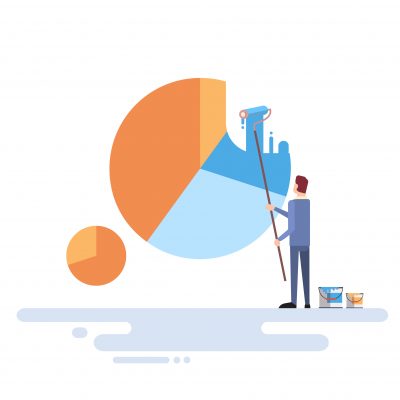Quick Look
- We highly recommend tracking your expenses by account instead of spending category.
- Tracking by account is faster (simply enter an average number for your spending for each account) and more accurate because you’re less likely to forget a spending category.
- On the “Plan” tab of Budget Planner, in the spending section track your spending by each of your accounts, or spending categories.
- You can customize your own account names or categories by typing in the drop down and selecting “Create New.”
Details
We get it: Tracking expenses is annoying. Most people can’t stick with “tracking every dollar” for the long haul. That’s why in the task to set up your Budget Planner dashboard, we described three different methods for tracking your spending:
- Track spending by account
- Tracking spending by category
- A mix of account and category tracking
Many people start out tracking by category to get a sense of where they spend their money and then once they feel like they have a good handle on this they move to looking at total expenditures by account. It’s much easier to update and track just one spending number per account per month than to track every single category of spending.
Our recommendation is to try one method for two months and if it doesn’t work for you for whatever reason, try another method.
Tracking by Account
As previously stated in an earlier task:
- Look at the “Total Purchases” line on your monthly account statements.
- Compare a few month’s worth of statements to get a good estimate of your low and high spending numbers. Or, you can calculate your average number between statements and enter that average number in both fields.
- Do steps one and two for each credit card and all checking accounts you regularly use.
Tracking by Category
Review the categories below and add your low and high estimates in for any that apply to you. If you don’t have any idea what you spend, many credit card and checking accounts have a section on the site that will break down your spending by category so take a look at that if you need help.
Essentials (yours may differ)

If you have trouble tracking your spending by category, we highly recommend tracking by total account spending instead.
- Auto insurance
- Car payment
- Cell phone bill
- Child care
- Electricity and natural gas
- Gasoline
- Groceries, toiletries and other essentials
- Health insurance (only if this comes out of your net income)
- Homeowners or renters insurance
- Internet payment
- Life insurance
- Medical costs
- Mortgage/rent
- Pet-related expenses
- Property tax (if not already included in the mortgage payment)
- Public transportation
- Sanitation/garbage
- Water
Extras (yours may differ)
- Alcohol
- Cable or TV streaming services
- Clothing, jewelry, etc.
- Dining out
- Gym or club memberships
- Home furnishings
- Movie, concert and event tickets
- Streaming music service
- Travel expenses (airline tickets, hotels, rental cars, etc.)
Obligations & Responsibilities (yours may differ)
- Child support or alimony payments
- Credit card payments
- Extra payments on mortgage or student loans
- Individual after-tax retirement account (e.g. Roth IRA)
- Other loan payments
- Student loan payments
- Other investments
Conclusion
That’s it! You now have a plan set up for tracking your monthly expenses. If you track by account, you should be able to track your budget in about ten minutes per month. If you track by category, it will take you a bit longer but you’ll have a granular view of precisely where your money is going.